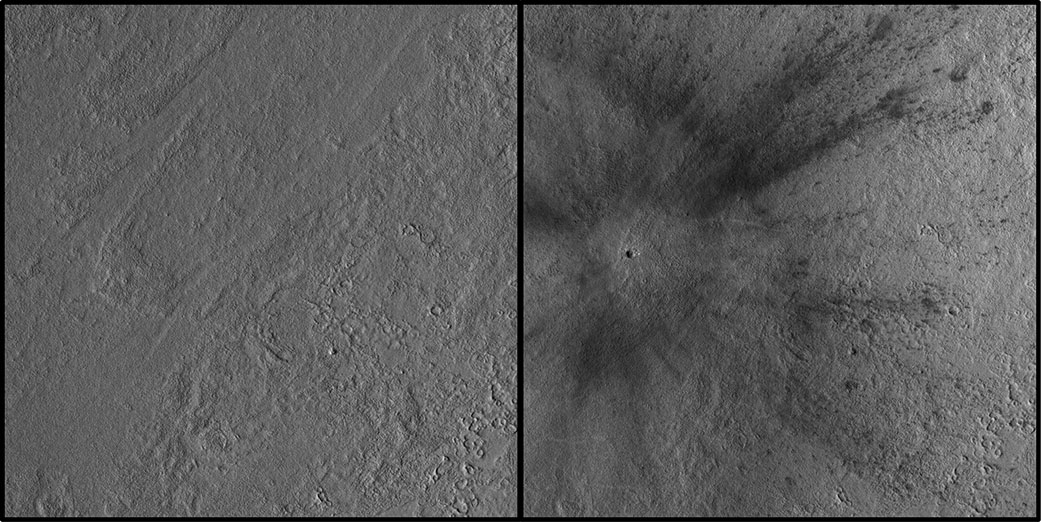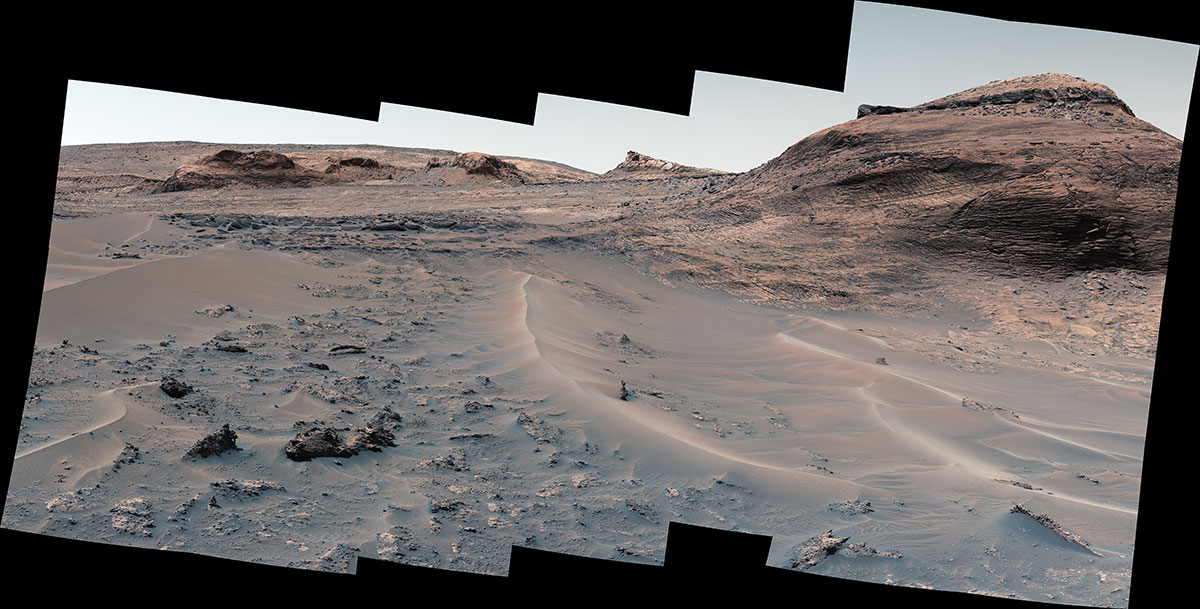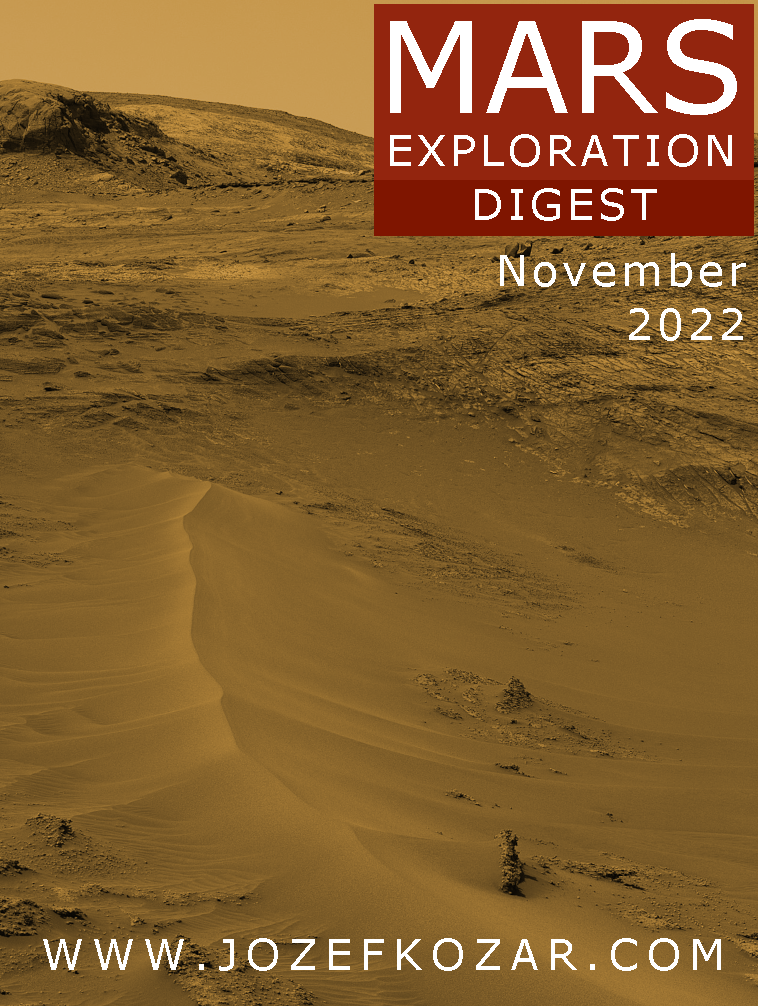Mars Exploration Digest: Issue November 2022
A regular monthly digest of Mars research news for November 2022.
Tip:
[SK] Slovenskú verziu článku si môžte prečítať tu: Výber z výskumu Marsu: November 2022
NASA is preparing to end the mission of InSight
The day is approaching when NASA’s Mars InSight lander will wind down and end its historic mission to uncover the secrets of the red planet’s interior. The probe’s electricity production using solar panels continues to decline. The reason is the wind-blown dust on its solar panels. The layer of wind-up dust is constantly increasing and, naturally, their performance decreases rapidly. The InSight mission team has taken steps to ensure that the probe can operate with its current remaining power as long as possible. However, it is highly likely that the probe will be decommissioned within the next few weeks and thus the end of the active mission of the InSight probe.

InSight probe on the surface of Mars. The solar panels are still clean. This image was obtained by the probe’s robotic arm at the start of its mission. Image credit: NASA/JPL-Caltech.

Notice the solar panels of InSight and also the probe itself in this photo. The solar panels and the probe are completely covered in dust – particles of tiny regolith (soil on Mars) blown by the wind. Image credit: NASA/JPL-Caltech.
The most important of the final steps of the InSight mission is to store the data and make it available to researchers around the world. The lander’s data yielded details about the inner layers of Mars, its liquid core, the surprisingly variable remnants below the surface of its mostly extinct magnetic field, the weather in this part of Mars, and the many recorded tremors, called aftershocks. “marsquakes”.
InSight detected the impact of a meteoroid on the surface of Mars
On December 24, 2021, NASA’s InSight probe recorded a Martian earthquake with a magnitude of 4. The scientists themselves only later discovered the cause of this earthquake: the impact of a meteoroid, which is estimated to be one of the largest observed on Mars since NASA began exploring space. Additionally, the impact ejected boulder-sized chunks of ice that were much closer to the Martian equator than subsurface ice had ever been detected before.

The area where a meteoroid impact was identified is the Amazonis Planitia region of Mars. Images by the Context Camera on board the MRO orbiter. Image credit: NASA/JPL-Caltech; MSSS.
The proof that the Martian earthquake was the result of a meteoroid impact was finally a detailed analysis of detailed images of the place where the impact was identified. These images were acquired by the Context Camera, and then this location was imaged by the HiRISE camera of the MRO (Mars Reconnaissance Orbiter, NASA).

In the image from the HiRISE camera of the MRO (Mars Reconnaissance Orbiter) probe, we see large pieces of boulders, which are basically pieces of ice. The crater itself was created on 24/12/2021 by the impact of a meteoroid in the Amazonis Planitia area on Mars. Image credit: NASA/JPL-Caltech.
Perseverance explores the fascinating bedrock of the former river
The Perseverance Mars probe has begun exploring an area that the mission’s science team calls “Yori Pass”. The site is located near the base of an old river delta that fed into Jezero Crater. Efforts to investigate the site in detail have been ongoing for several months since the sandstone was identified as a deposit at the site. from fine grains that were brought to this place by the water. The subsequent deposition of individual layers caused the formation of this interesting sandstone bedrock.
Perseverance gradually collects samples, which is one of the most important factors in the cooperation between NASA and ESA in the future continuation of Mars research, namely in the project of delivering samples from Mars to Earth (Mars Sample Return). You can watch the animation of this mission proposal in the official video below.
You can see the exact location of the Mars 2020 Perseverance probe/rover on the interactive map:
Development of a mission to deliver samples from Mars to Earth
Currently, the development and testing of the return device from Mars to Earth (Mars Sample Return mission) is already actively underway. It will be a system for delivering samples from Mars. One of the key components of this system is the shield itself for entering the Earth’s atmosphere and, of course, the external protection of the system itself, which will be exposed to many extremes during the return.
One of these extremes is micrometeorites, with which this system can very likely come into contact during its movement along an interplanetary trajectory toward Earth. Tests of these parts of the system are already underway within the NASA Goddard Space Flight Center section at the NASA White Sands test facility in Las Cruces, New Mexico (USA).
You can watch an interesting video of the test equipment and the tests themselves below.
The Curiosity rover reached the long-awaited “salty” site
During a long journey through a narrow, sand-lined pass, Curiosity recently arrived at a sulfate site in the Mount Sharp region. It is a location rich in salty minerals.
Scientists hypothesize that billions of years ago, streams and lakes left behind minerals as the water gradually dried up. Assuming this hypothesis is correct, these minerals can offer us interesting clues and possible answers to the questions of how and why the climate of Mars changed from one that was very similar to the climate on Earth – to the current one, and why Mars now covers an essentially global frozen dessert.
The minerals were spotted by NASA’s Mars Reconnaissance Orbiter years before Curiosity landed (2012), so we’ve been waiting a long time to see this type of terrain on Mars up close. Soon after arriving at the site, Curiosity discovered a very diverse range of rock types and signs of ancient water. There are traces of minerals such as magnesium sulfate, calcium sulfate, and sodium chloride.

Curiosity’s view of sand ridges and a mountain called “Bolivar,” using the Mastcam, on August 23, 2022, Sol 3572. Image credit: NASA/JPL-Caltech; MSSS.
You can find the next issue of the monthly “Mars Exploration Digest” and its Slovak version on my website https://www.jozefkozar.com starting in January 2023. I wish you all a relaxing rest of 2022 and happy holidays, folks.
Dr. Jozef Kozár
Tip:
[SK] Slovenskú verziu článku si môžte prečítať tu: Výber z výskumu Marsu: November 2022
You can download this edition in PDF format for free here:

November 2022 (EN)
Send download link to:
![]()
You can also find this article in the online version of the newspaper SME.









